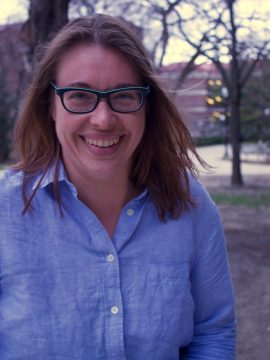Anne-Michelle Tessier
Research Area
About
I am primarily a theoretical phonologist who studies acquisition. When I have to put keywords on an abstract, they usually include “constraint-based” and/or “learning algorithms”, but I also work on things like lexical avoidance, U-shaped development, L2 production and perception in childhood, prosodic processing with cochlear implants, and shitgibbons. For several years I was an Associate Editor at Glossa (an open access general theoretical linguistics journal), and before that at Lingua before the entire Editorial Board quit and formed Glossa. I have also written an advanced undergraduate textbook about Phonological Acquisition that teaches the basics of OT along the way.
Teaching
Research
My main area of research is the acquisition of phonological grammars, but in investigating how children and adults learn phonologies I also try to think about flavours of constraint-based phonologies (such as classic OT, Harmonic Grammar and Harmonic Serialism), the strengths and weaknesses of algorithmic error-driven learning, where U-shaped phonological development comes from, how second language learning in childhood works, how morphological ‘discovery’ can re-organize phonology, how phonological acquisition and associated processing is affected in children with cochlear implants, how artificial grammar learning does and doesn’t tap grammatical knowledge, and why people find some swear words more phonologically satisfying than others (compare ‘shitgibbon’ vs ‘shittrumpet’, but ‘fucktrumpet’ vs ‘fuckgibbon’).
I am also the director of the fairly loosely organized UBC Child Phonology Lab
For more on all my current and previous research, please see
Publications
Most recently:
Farris-Trimble, Ashley and Anne-Michelle Tessier (2019). ‘The effect of allophonic processes on word recognition: Eye-tracking evidence from Canadian raising’. Language: Research Reports 93(1) pp. e136-e160. Open Access available: here.
Basura, Greg, Xiao-Su Hu, Juan San Juan, Anne-Michelle Tessier and Ioulia Kovelman (2018). “Human Central Auditory Plasticity: A Review of Functional
Near-Infrared Spectroscopy (fNIRS) to Measure Cochlear Implant Performance and Tinnitus Perception.” Laryngoscope Investigative Otolaryngology 3. DOI: 10.1002/lio2.185.
Everything else:
All my research output is available at my personal website — or at least it should be, so if you don’t find something there that you think I’ve done, please email me.
